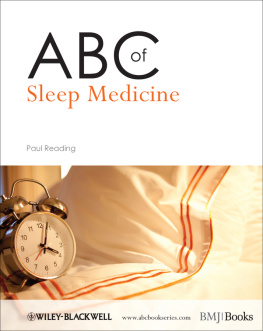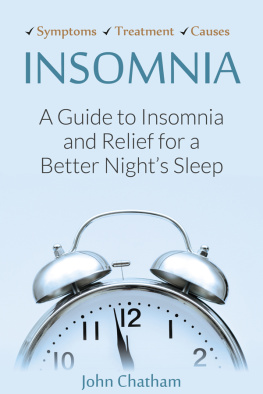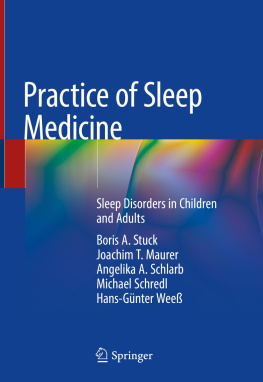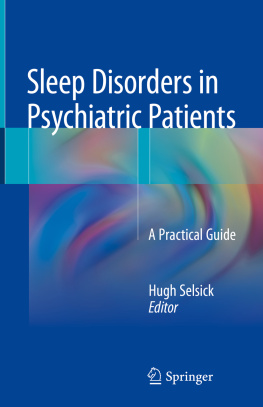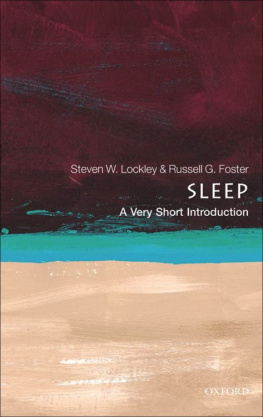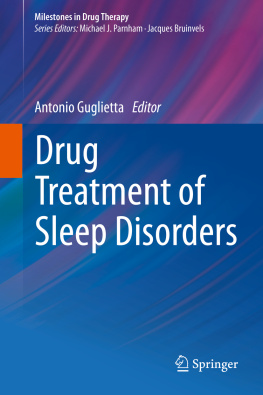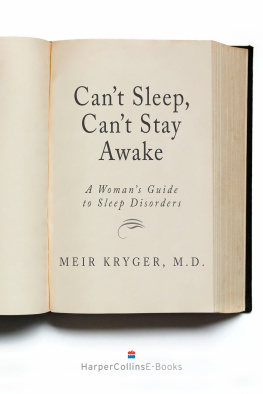
This edition first published 2013, 2013 by John Wiley & Sons, Ltd.
BMJ Books is an imprint of BMJ Publishing Group Limited, used under licence by Blackwell Publishing which was acquired by John Wiley & Sons in February 2007. Blackwell's publishing programme has been merged with Wiley's global Scientific, Technical and Medical business to form Wiley-Blackwell.
Registered office: John Wiley & Sons, Ltd, The Atrium, Southern Gate, Chichester, West Sussex, PO19 8SQ, UK
Editorial offices: 9600 Garsington Road, Oxford, OX4 2DQ, UK
The Atrium, Southern Gate, Chichester, West Sussex, PO19 8SQ, UK
111 River Street, Hoboken, NJ 07030-5774, USA
For details of our global editorial offices, for customer services and for information about how to apply for permission to reuse the copyright material in this book please see our website at www.wiley.com/wiley-blackwell
The right of the author to be identified as the author of this work has been asserted in accordance with the UK Copyright, Designs and Patents Act 1988.
All rights reserved. No part of this publication may be reproduced, stored in a retrieval system, or transmitted, in any form or by any means, electronic, mechanical, photocopying, recording or otherwise, except as permitted by the UK Copyright, Designs and Patents Act 1988, without the prior permission of the publisher.
Designations used by companies to distinguish their products are often claimed as trademarks. All brand names and product names used in this book are trade names, service marks, trademarks or registered trademarks of their respective owners. The publisher is not associated with any product or vendor mentioned in this book. This publication is designed to provide accurate and authoritative information in regard to the subject matter covered. It is sold on the understanding that the publisher is not engaged in rendering professional services. If professional advice or other expert assistance is required, the services of a competent professional should be sought.
The contents of this work are intended to further general scientific research, understanding, and discussion only and are not intended and should not be relied upon as recommending or promoting a specific method, diagnosis, or treatment by physicians for any particular patient. The publisher and the author make no representations or warranties with respect to the accuracy or completeness of the contents of this work and specifically disclaim all warranties, including without limitation any implied warranties of fitness for a particular purpose. In view of ongoing research, equipment modifications, changes in governmental regulations, and the constant flow of information relating to the use of medicines, equipment, and devices, the reader is urged to review and evaluate the information provided in the package insert or instructions for each medicine, equipment, or device for, among other things, any changes in the instructions or indication of usage and for added warnings and precautions. Readers should consult with a specialist where appropriate. The fact that an organization or Website is referred to in this work as a citation and/or a potential source of further information does not mean that the author or the publisher endorses the information the organization or Website may provide or recommendations it may make. Further, readers should be aware that Internet Websites listed in this work may have changed or disappeared between when this work was written and when it is read. No warranty may be created or extended by any promotional statements for this work. Neither the publisher nor the author shall be liable for any damages arising herefrom.
Library of Congress Cataloging-in-Publication Data
Reading, Paul.
ABC of sleep medicine / Paul Reading.
p. ; cm.
Includes bibliographical references and index.
ISBN 978-0-470-65946-5 (pbk.)
I. Title.
[DNLM: 1. Sleep Disorderspathology. 2. Sleepphysiology. WL 108]
616.8498dc23
2012035462
A catalogue record for this book is available from the British Library.
Wiley also publishes its books in a variety of electronic formats. Some content that appears in print may not be available in electronic books.
Cover design by: Meaden Creative
Preface
At a personal level, everyone recognises the importance of good quality sleep. From a medical perspective, however, only recently has the potential adverse impact of a disordered sleepwake cycle on cognitive, mental and even physical health been realised. The consequences of excessive daytime sleepiness are also increasingly defined, especially with respect to driving and other potentially dangerous activities. Perhaps surprisingly, the precise biological reasons why every animal has a basic need for regular sleep are still speculative and the fascinating state of rapid eye movement (REM) sleep remains a particular enigma. However, it is abundantly clear that sleepiness is a true drive state and, ultimately, as important as hunger or thirst for optimal health and survival.
Partly because it cuts across numerous more established specialities, the emerging discipline of sleep medicine remains in its infancy and is generally poorly addressed in medical schools. As a consequence, many physicians in primary and secondary care lack confidence in addressing sleep-related symptoms, despite significant advances in our understanding and treatment options for the majority of sleep disorders over the last decade. A further confound is a widely held and mistaken belief that sleep disorders invariably require complex and expensive techniques for confident diagnosis. With the exception of sleep-related breathing disorders, the majority of sleep disorders can actually be adequately managed without an absolute need for detailed investigations.
This book has been written as a primer for understanding the fascinating phenomenon of sleep and its commoner disorders. The aim has been to provide a readable text for non-specialists, covering the full range of recognised sleep disorders that might present to general physicians and sleep clinics. Throughout, it is emphasised that a full sleepwake history, potentially corroborated by close family members, together with a basic knowledge of sleep neurobiology, will usually allow an accurate diagnosis and potential treatment options. The full range of diagnostic sleep investigations is also discussed in some detail, outlining when they are appropriate but also highlighting pitfalls in interpretation. Of course, it is often difficult to know whether sleep-related symptoms reflect a defined disorder or simply result from social or psychological factors; grey areas undoubtedly remain. However, symptomatic red flags are highlighted which may indicate the need for more specialist attention.
A particularly difficult area in sleep medicine is the scarcity of a controlled evidence base to guide treatment protocols. As an inevitable consequence, the reader should be aware that many suggestions for medications mentioned in this text are personal recommendations, based largely on anecdotal evidence. Furthermore, it should be noted that it is rare for a drug to have a formal licence for use in sleep medicine.
Sleep clinics, at least in the United Kingdom, are increasing in numbers but remain variable in their ability to address the whole gamut of sleep disorders. The majority are primarily concerned with managing the important condition of obstructive sleep apnoea but lack expertise in neurological or psychological aspects of sleep disorders. A working knowledge of the whole spectrum of sleep disorders is therefore essential for primary care physicians, especially since symptoms of impaired sleep or reduced daytime alertness are amongst the commonest complaints. Not infrequently, a potentially disabling and treatable condition such as narcolepsy may be missed if an incomplete history is elicited. This book will hopefully introduce non-specialists to sleep medicine and increase confidence in how to approach sleep-related symptoms, removing some of the mystique surrounding this fascinating and important area of medicine.
Next page
